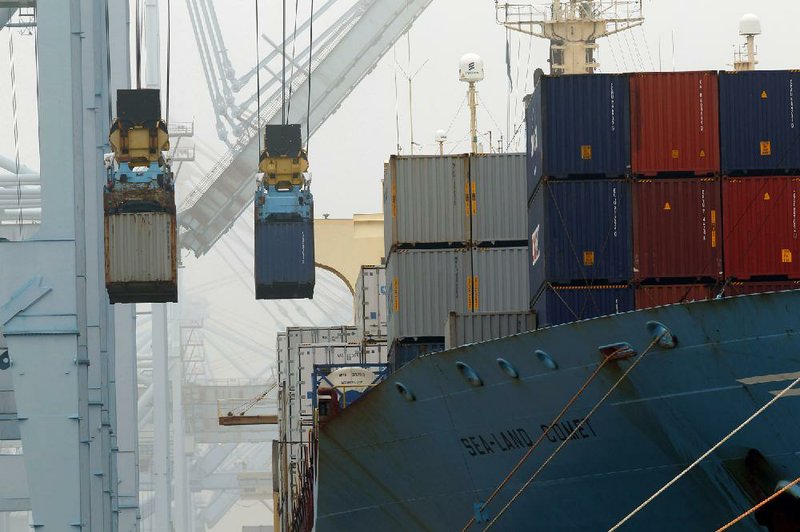WASHINGTON — The U.S. trade deficit fell sharply in December as exports grew at a solid pace while imports of oil and many other goods shrank from the previous month, the Commerce Department reported Friday.
The smaller trade gap means the economy almost surely grew in the October-December quarter - an improvement from the government’s estimate last week that it shrank in the final months of 2012.
The trade deficit fell nearly 21 percent in December from November to $38.6 billion, the Commerce Department said Friday. That’s the smallest in nearly three years.
Exports rose 2.1 percent to $186.4 billion. Exports of oil and other petroleum products rose to the highest level on record. Overseas shipments of agriculture goods and aircraft also increased.
“The improvement in exports is encouraging,” said Brian Jones, a senior U.S. economist at financial services company Societe Generale in New York. “With Europe looking less weak and Asia getting better, the outlook for U.S. exports has got to be pretty positive.”
Imports shrank 2.7 percent to $224.9 billion. Oil imports plunged to 223 billion barrels, the fewest since February 1997.
“All this is encouraging and ... it now looks like exports will continue to strengthen as the year goes on,” said Paul Ashworth, an economist at Capital Economics. A survey of U.S. manufacturers, released last week, showed export orders grew in January for the second-straight month.
A narrower trade gap enhances growth because it means U.S. companies earned more from overseas sales while consumers and businesses spent less on foreign products.
Fewer exports were one of the reasons the government’s first estimate of economic growth in the October-December quarter showed a contraction at an annual rate of 0.1 percent. The December trade deficit figures were not available when the government reported its estimate last week.
Jim O’Sullivan, chief U.S. economist at High Frequency Economics, estimates that the improved trade picture will add 0.7 percentage point to economic growth in the October-December quarter.
Still, sluggish restocking by companies and deep cuts in defense spending are expected to keep fourth-quarter growth weak. And a separate Commerce report Friday showed wholesale stockpiles declined in December, which could offset some of the gain from trade.
Economists at Barclays Capital on Friday expect growth to be revised up to an annual rate of 0.3 percent in the October-December quarter. The government will issue its second estimate for fourth-quarter growth Feb. 28.
Some of the slide in December imports could suggest weakening American consumer demand, said Chris Williamson, chief economist at Markit, a financial-information services company.
Still, Williamson noted that with China’s exports surging in the past two months and some leading European countries showing signs of a pickup in trade, the data are “starting to confirm the message from the worldwide business surveys that global economic growth is reviving at the start of 2013, assisted by rising trade flows, with the U.S. acting as an important driver of the revival.”
For all of 2012, the trade deficit narrowed 3.5 percent to $540.4 billion.
Many economists believe that trade will give the economy a small lift in 2013. That forecast is based on an assumption that the European debt crisis will stabilize, helping increase U.S. exports to that region, and economic growth in Asia will continue to rebound.
The trade deficit with China rose to $315.1 billion last year, the largest on record with any country. That could add to pressure on the Obama administration and Congress to take a harder line on China’s trade practices. Some U.S. manufacturers contend that China keeps the value of its currency artificially low to make its exports to the U.S. cheaper.
“The record trade deficit with China will not disappear on its own,” said Scott Paul, president of the Alliance for American Manufacturing. “Congress and the administration must take on currency manipulation ... as well as China’s persistent cheating on its trade obligations.” Information for this article was contributed by Christopher S. Rugaber of The Associated Press; by Don Lee of the Tribune Washington Bureau; and by Shobhana Chandra of Bloomberg News.
Front Section, Pages 1 on 02/09/2013

